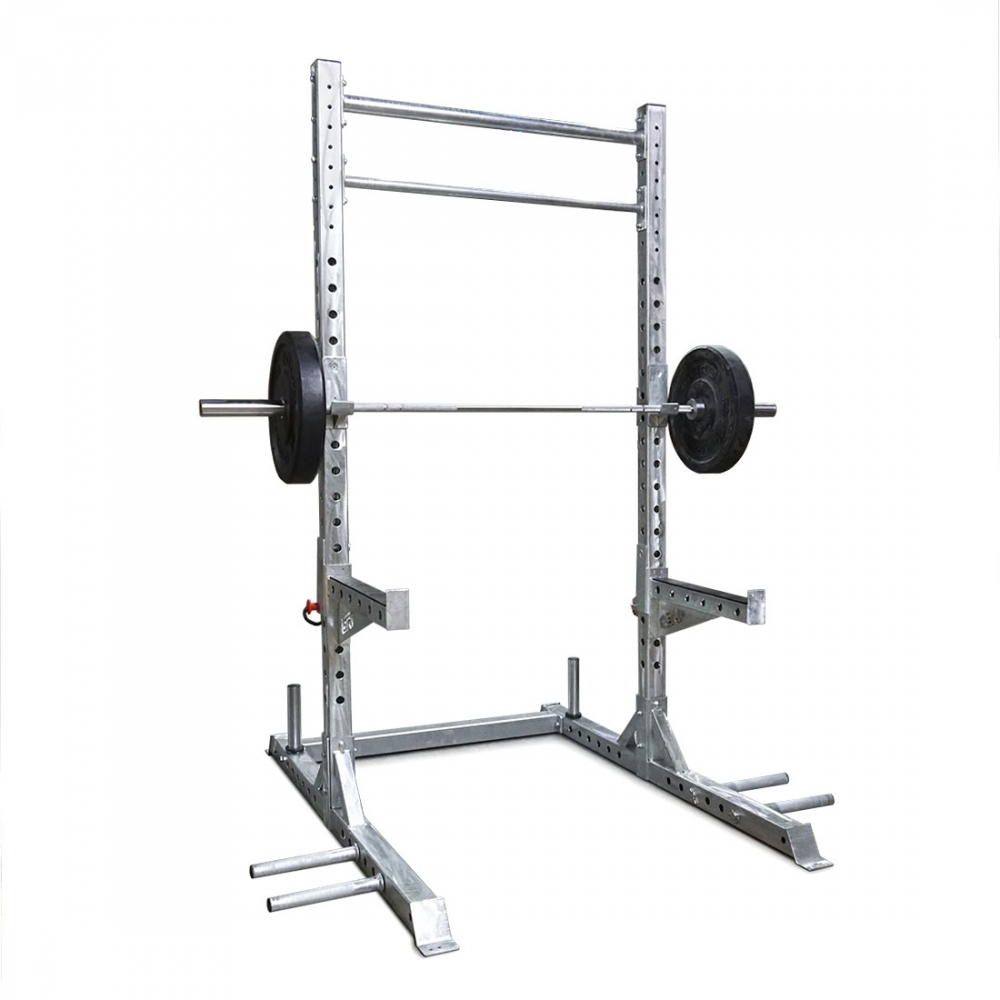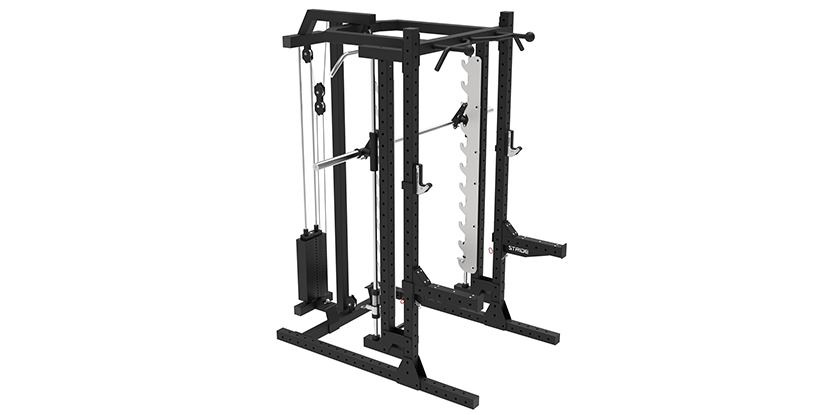We started looking into galvanized squat rack after noticing rust creeping onto our equipment—even though our gym’s fully indoors and climate-controlled. At first, I didn’t think corrosion would be a real issue. But after running a high-traffic commercial gym for years, I’ve learned that rust shows up whether you like it or not.
So, I started testing galvanized options to see if they could actually hold up better over time.
Why Galvanized Squat Racks Make Sense in Commercial Gyms
After managing commercial gym equipment for years, I’ve learned that finish matters more than most people think. Here’s why galvanized squat racks became a no-brainer for us:
What “Galvanized” Actually Means
- Basically, galvanized means the rack’s coated in zinc—so even if it gets banged up, it won’t rust out on you.
How It Compares to Other Finishes
- Powder-coated racks look great but chip easily under heavy use
- Once powder coating or paint peels, rust creeps in fast—especially with sweaty hands or constant re-racking
- Galvanized steel? No paint, no peeling, no nonsense
Why It’s Built for Harsh Gym Conditions
- Great for high-humidity gyms, coastal cities, or anywhere sweaty sessions happen back-to-back
- We’ve had painted racks rust in just months—galvanized ones stay solid for years
- Perfect for gym floors with lots of traffic and zero time for constant maintenance
It’s not about flashy finishes—it’s about long-term durability and less upkeep. If your gym gets serious use, galvanized gear just holds up better. Simple as that.

How Galvanized Racks Hold Up in Real Gym Use
When we first made the switch to galvanized squat rack, I honestly wasn’t sure if it’d be worth it. But a few months in, here’s exactly what went down:
What We Replaced First and Why
- We started with the squat racks, since they take the most abuse—heavy bars, sweaty shoulders, and chalk all day.
- The old ones were constantly chipping and rusting around the J-hooks and base.
What Happened Over Time
- After 6 months of nonstop use, our galvanized racks still looked clean—no flaky rust, no bubbling, no ugly wear.
- Members stopped complaining about grime and rusty stains.
- We saved time since there was way less maintenance—no touch-up painting or constant wiping down.
What Paid Off (and What We Skipped)
- We galvanized racks, plate trees, and barbell storage first—these take the most contact and sweat.
- We held off on galvanizing things like benches or smaller machines for now—those aren’t as exposed.
If you’re running a high-traffic gym, galvanized gear isn’t just “nice to have.” It’s a no-brainer investment that pays off in durability, hygiene, and fewer headaches.

Hi, I’m the editor here at Leadman Fitness. We’re a manufacturer focused on producing top-quality barbells, plates, kettlebells, dumbbells, and strength training gear. I’ve been into sports and fitness for years, and I know my way around all kinds of gym equipment—both from using it and helping create it.
I spend a lot of time understanding the real problems people run into in the gym—whether it’s beginners trying to pick the right gear or experienced lifters looking for something more durable. I stay in close touch with our production team and talk directly with other equipment makers, so we’re always improving based on what real lifters and coaches are looking for.
What I share comes from hands-on experience—stuff that actually helps people train better, not just in theory, but in real gyms.
